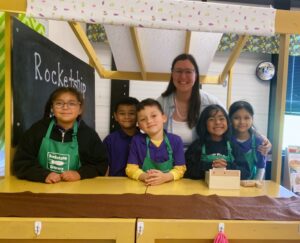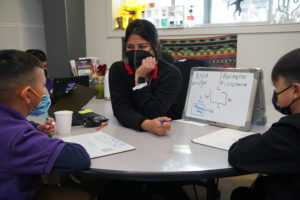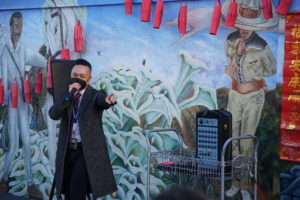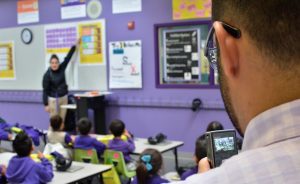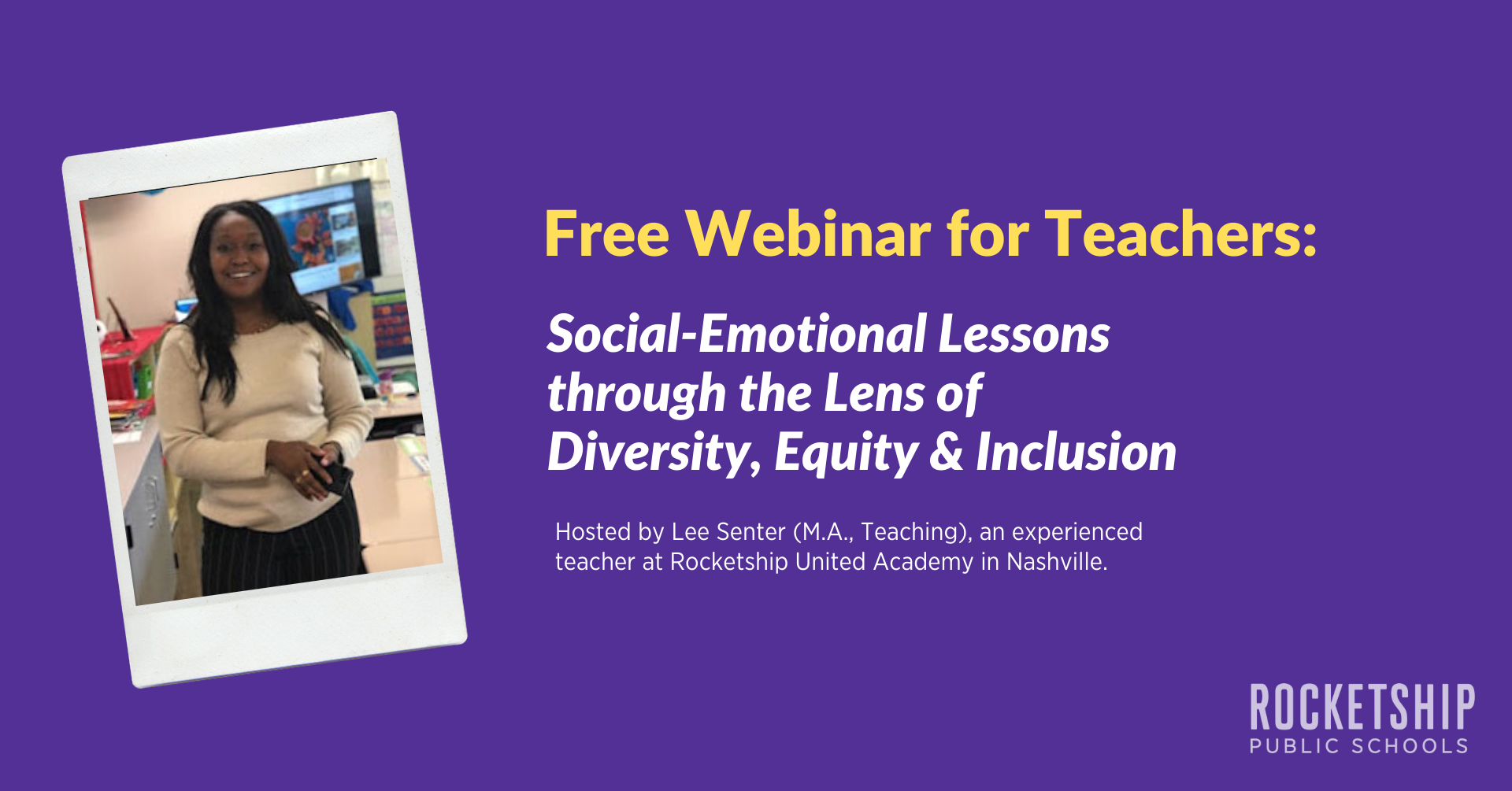
Here’s What This Teacher Learned from the ‘SEL Through the Lens of DEI’ Webinar
James Cross, 4th Grade Teacher, Rocketship Nashville Northeast Elementary
I hear the word DEI a lot as a teacher. In the education world, it’s a buzzword that often never gets the full attention that it deserves. It’s a conversation and practice that requires a firm commitment and intentional planning. Diversity, Equity and Inclusion (DEI) is also work that you must start with yourself. We can’t create diverse classrooms that are focused on equity and inclusion if we don’t take the time to understand how these terms impact our lives as educators.
In a larger sense, we also have to consider that the term DEI is an umbrella term that encompasses so many important considerations. One way I like to think about this is through the idea of belonging. Instead of asking myself if my classroom is incorporating DEI, I like to ask myself if my classroom is fostering a safe place where everyone feels that they belong. And this process is no easy task.
As a teacher in the middle of my own journey trying to better understand how DEI is ingrained in our classrooms, I found Ms. Senter’s “Social-Emotional Lessons Through the Lens of DEI” webinar to be a refreshing opportunity to think through my choices as a teacher.
Here are some key takeaways I learned! Before you dive in, don’t forget to download Ms. Senter’s Take Home Resource Sheet to help you incorporate DEI into your social-emotional lessons.
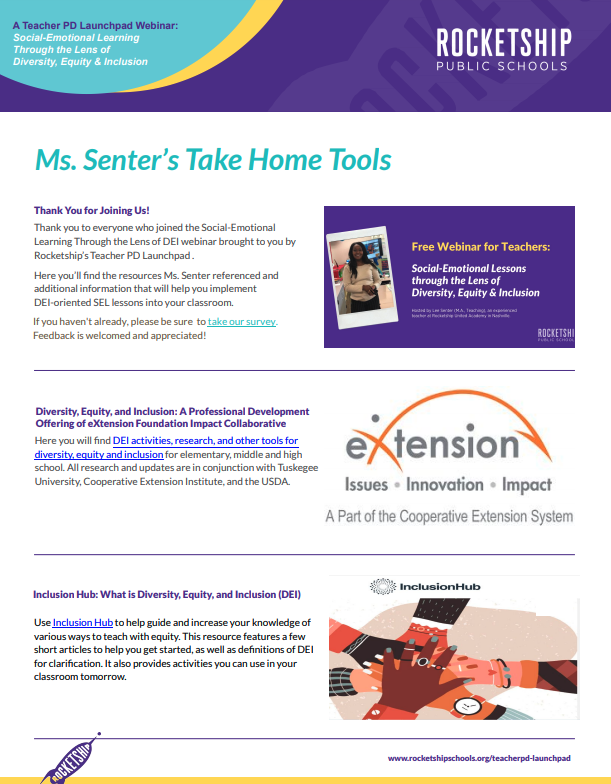 1. Heighten your awareness around who is in your classroom and the experiences they bring to the classroom.
1. Heighten your awareness around who is in your classroom and the experiences they bring to the classroom.
Ms. Senter explained that the first step all teachers need to make is being aware of their own actions and our students’ responses to what we say and do. This means that we have to take time to reflect on our actions and things we say and acknowledge when we made an incorrect assumption or didn’t seek understanding.
For me, this was a great reminder that we need to take a step back sometimes. My students are still virtual and it’s very easy to make assumptions about what they should know or be prepared for. I’m going to take the time to ensure I am not only giving them grace but checking in on my word choices and feedback.
Thinking of awareness, I think a lot about the debate over cameras and food in a virtual class. At the beginning of the year, I was the teacher who said you cannot eat in class and your camera must be on. My excuse was always that if we were in the building you would be present and not eating. I think back on those days and think about how privileged I was to have that expectation. We aren’t in the building and I need to remember that sometimes my students are doing the best they can. I can encourage them to have their cameras on and model for them with mine on, but I don’t always have the awareness of why they might not be comfortable with theirs on.
We have a great system that works for us now. If my students do have their cameras off for whatever reason, they just have to send me a quick message during our breaks just so I know they are still with us. A simple “hello” is all I need. As far as food goes, I encourage them to try to hold out for a break, but also take care of their needs. There is really no reason for me to be upset that a student wants to eat a sandwich while uncovering the main idea of the latest close reading text.
2. With awareness comes the need to check for your own understanding before presenting information to your students.
Understanding refers to how well you grasp what you are trying to teach and understanding the best way to teach it. Once you have established what you are going to teach you have to take the time to make sure that you are fully teaching that lesson. Are you giving your students time to ask and answer questions? Are you allowing your students to interact with the material? What will they be able to walk away with? I will be taking another look at my instruction to think through these questions. Specifically, I want to make sure that the material I am presenting is going to actually bring understanding and not lead to further confusion.
I think about a lesson I gave this year to my students on the US Constitution. We were discussing the realities of early America and who the Constitution did not protect. The lesson included one sentence that mentioned the Atlantic Slave Trade. I didn’t take any time to address it and my students all wanted to know what the Atlantic Slave Trade was and wanted more information. I was able to table the discussion so I could do my own research and then give them a full lesson on The Atlantic Slave Trade later in the week, but when considering understanding I should have realized my students would need more understanding of that topic and prepared how I can bring it to them ahead of time.
Unlike some of our other Teacher PD Launchpad webinar topics, DEI in the classroom doesn’t always come with quick tips and packageable how-tos. Just as Ms. Senter encouraged us to do this webinar, we have to take the time to reflect on our classroom experiences. We have to think critically about the assumptions we make and how they impact our students. And while this may seem difficult to grapple with at times because it’s less tangible, it’s a good place to start.
Thank you to everyone who joined us for this webinar. If you missed it, watch the full session below!
Published on February 19, 2021
Read more stories about: Equity.
Back In The Classroom
How Co-Teacher Collaboration Can Benefit Your Classroom
Featuring Alejandra Chavez, Education Specialist at Rocketship Mosaic Elementary | June 10, 2024
Hear from Ms. Aly about how a small team of educators can make a big difference in student outcomes through thoughtful planning, focused collaboration, and personalized accommodations. Ms. Aly was one of our highest-performing educators in California for the 23-24 school year.
Read more ⟩How This 5th Grade Teacher Brings Positive Role Models into his Classroom
Featuring Brandon LaBella, 5th Grade Teacher, Rocketship Spark Academy | March 1, 2023
In this 30-minute chat, you'll hear what keeps this teacher motivated, the power of relationships, and how he brought in speakers to discuss career paths and life perspectives.
Read more ⟩How to Spark Joy in ESL Classrooms with a Multilingual Learning Clubhouse
Featuring Ms. Amy De La Rosa, Multilingual Specialist, Nashville Northeast Elementary | June 1, 2023
Listen in to an audio interview with Amy De La Rosa, a Multilingual Specialist who has worked as an educator for over 14 years and found an innovative way to help her students learn English in a more accelerated, playful way.
Read more ⟩Supporting Parents of Multilingual Students in Family/Teacher Conferences
Emma Volpe, Rocketship United Academy | June 1, 2022
Get thoughtful insight on how to create a more inclusive family-teacher conference environment.
Read more ⟩5 Ways to Strengthen Relationships in the Classroom
James Cross, Assistant Principal, Rocketship Nashville Northeast Elementary | February 20, 2022
A new age of education calls for a new level of connection. Here are some key tips to strengthen relationships in your classroom this school year.
Read more ⟩How BurnIn Mental Strategies Can Improve an Educator's Experience
Rocketship Public Schools | February 21, 2022
Learn how teachers use BurnIn mindset strategies to focus on strengths, deepen relationships, and navigate challenging times.
Read more ⟩5 Ways School Leaders Can Coach and Support Teachers
Eesir Kaur, Director of Professional Development | October 15, 2020
Are you a school leader looking to coach your teachers more effectively? Here's what works for us.
Read more ⟩





